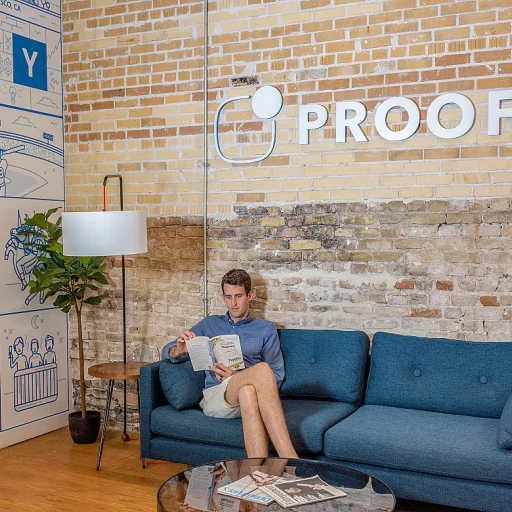
Defining the Member at Large
Clarifying the Unique Role Within the Organization
The title of 'Member at Large' might sound somewhat ambiguous in the context of UK companies, yet it plays an essential part in the governance and management framework. Unlike other board members who hold specific roles such as chair or treasurer, the Member at Large is typically elected to represent the general interests of the organization's members in a comprehensive fashion. Think of this role as a flexible bridge between board governance and broader organizational dynamics. The Member at Large does not hold a predefined department-centric position. Instead, they engage in overall board management activities, offering a perspective that might not be tied to specific departments or committees. This allows them to focus on various issues, from the execution of strategies in board meetings to ensuring the continuous alignment of the board's vision with the organization's goals. Although their job description might not be as narrowly defined as that of other board members, members elected to this position carry the critical responsibility of fostering effective communication among the board directors and the organization at large. Through their voting rights, they influence decision-making in a manner representative of the broader member body. For those interested in more in-depth insights about how such roles execute their duties in action, exploring the best business mentors for UK companies may provide valuable perspectives on effective strategies and practices in organizational contexts.Responsibilities of a Member at Large
{Key Roles and Responsibilities Within the Board
A member at large within UK companies plays a crucial role in the overall board governance and management. Though the position may not be defined by specific duties like other board directors, its general responsibilities are pivotal in supporting a balance in board dynamics and decision-making processes.
In terms of governance, a member at large participates alongside other board members to ensure compliance with the governing documents and established protocols of the organization. This involves attending board meetings, actively engaging in discussions, and contributing to strategic development and policy formations. Their role often requires them to have a comprehensive understanding of the organization’s operations to act effectively as representatives overseeing broad aspects of the business.
Additionally, large members may take part in various committees, lending their expertise and perspectives to specific facets of board management. This inclusion further aids in the collaborative efforts to address complex issues or projects, bridging gaps that specialized directors might overlook.
Beyond these functions, members at large are often part of election processes, helping to oversee fair elections and ensuring newly elected members align with the organizational values and objectives. These duties highlight the importance of such members in fostering a transparent and accountable board environment.
For more insights on how effective governance can enhance management strategies, you might want to explore this article on business mentors in UK companies."
}
Benefits of Having a Member at Large
The Value Add to Corporate Governance
One of the significant benefits of incorporating a member at large within UK companies is the enhancement they bring to board governance. These members often serve without a specific sector commitment, making them pivotal in providing an independent perspective to the board meetings. They bring a neutral viewpoint, which can strengthen decision-making processes, especially in large boards where diversity of thought is essential.
By having no direct allegiance to a particular department, a member at large can focus on the broader interests of the organization. This position enables them to offer insights that transcend individual departmental concerns, thereby aligning with the company’s overarching mission and values.
In the context of election and voting rights, these members play a crucial role as represented bodies, advocating for cohesive strategies during board elections. Their involvement can facilitate smoother transitions within board cycles, enhancing continuity and stability in leadership roles. Moreover, the member at large’s ability to engage with hoa and council-style decision-making processes allows them to utilize governance models that can lead to improved strategic planning and execution.
Additionally, members at large often assume the responsibility of acting as liaisons between the committee and board directors, mediating and ensuring that board management remains efficient and focused. Such advocacy and representation can effectively streamline the coordination of roles and responsibilities.
Finally, related innovations, such as the use of governing documents and management software, are often championed by members at large, who play a key role in driving their adoption. This digital transformation within the board portal provides transparency and accessibility to board members, allowing for a more integrated and responsive governance framework. For more insights on how these elements contribute to a company’s success, check the benefits of having a member at large in your organization.
Challenges Faced by Members at Large
Obstacles Encountered by Members Fulfilling this Role
The journey of a member at large in UK companies can be riddled with challenges. Understanding the dynamics of board management, these members must navigate the complexities of governance with a clear understanding of their roles and responsibilities. Firstly, members at large may struggle with a lack of specific visibility since their position typically isn't tied to any singular department. This ambiguity can lead to confusion regarding their voting rights and influence over the board's decisions. Membership in a large board sometimes means that their voices may not be as prominently heard unless effective communication skills are exercised. Moreover, the election process to become a member at large poses its own hurdles. Potential candidates must appeal to a widespread range of board directors and representatives within the organization, making it essential to exhibit qualities that can win over a diverse group of stakeholders. Additionally, aligning with the governing documents and understanding the nuances of what a member at large can contribute to the committee or council can be daunting. Members must often tread a fine line between supporting overarching strategies and remaining impartial to maintain integrity and transparency within their governance roles. Management oversight is another concern, as members at large might face challenges integrating management software or engaging effectively in board meetings. The nature of their broad role means they could be less involved in day-to-day operations, making it imperative to stay informed and engaged through a board portal or similar tools. Ultimately, the challenges faced by a member at large are significant but not insurmountable. By embodying effective leadership and continuously engaging with board governance models, members can play a pivotal role in the board directors' success.How to Become a Member at Large
Pathway to Becoming a Key Team Player
Becoming a member at large within a UK company requires a clear understanding of the organization's governance and election process. Typically, this involves a structured pathway where interested individuals need to demonstrate their commitment and understanding of the roles and responsibilities inherent to the position. Below are some essential steps and considerations for aspiring candidates:- Understand the Role: It's vital to know what being a member at large entails. This includes their voting rights, involvement in board meetings, and responsibilities as outlined in the company's governing documents. Thorough knowledge of the member's role and expectations is crucial.
- Engage with Current Board Members: Interacting with current board members or directors can provide insights into the specific challenges and opportunities faced by the organization. This engagement can also help clarify the role of a member at large within the board governance structure.
- Meet Requirements: Ensure you meet any eligibility criteria set by the organization, which might include qualifications, experience, or other specifics outlined in the governing documents.
- Participate in Election Process: Typically, members at large are elected through a formal voting process. This means participating in an election where the board or council representatives—also known as the hoa board in some contexts—cast their votes.
- Showcase Leadership Skills: Strong candidates for a member at large position typically exhibit leadership, strategic thinking, and effective communication skills that align with board management and governance. Highlighting these during the selection process can make a significant impact.













